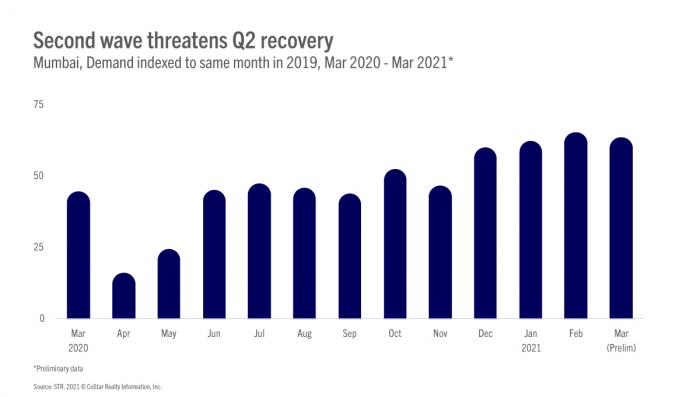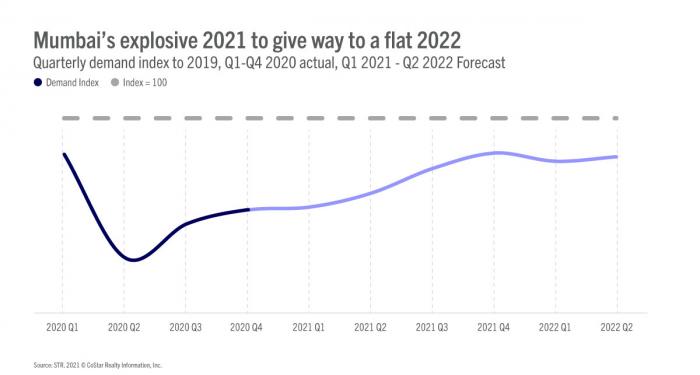After an auspicious start to its performance recovery, Mumbai’s hotel industry appeared ready to continue setting the trend for urban markets in 2021. However, a second wave of COVID-19 cases has called a temporary halt to the market’s success. Fortunately, strong domestic demand and corporate confidence, the drivers behind the market’s earlier recovery in 2020, remain poised to push performance again once cases are under control.
Current conundrum
More recently, Mumbai welcomed back corporate travelers, which helped lift demand in the first quarter of 2021. An institutional quarantine requirement helped drive demand as well, as travelers arriving from or transiting through several major world regions were required to undergo a 10-day institutional quarantine.
Between quarantine guests and business travel, February hotel demand reached 65% of its 2019 level, the market’s highest indexed level to this point. Perhaps even more surprising, group demand, which in most markets worldwide remains near almost nonexistent, surpassed 70% of its pre-pandemic levels in February.

